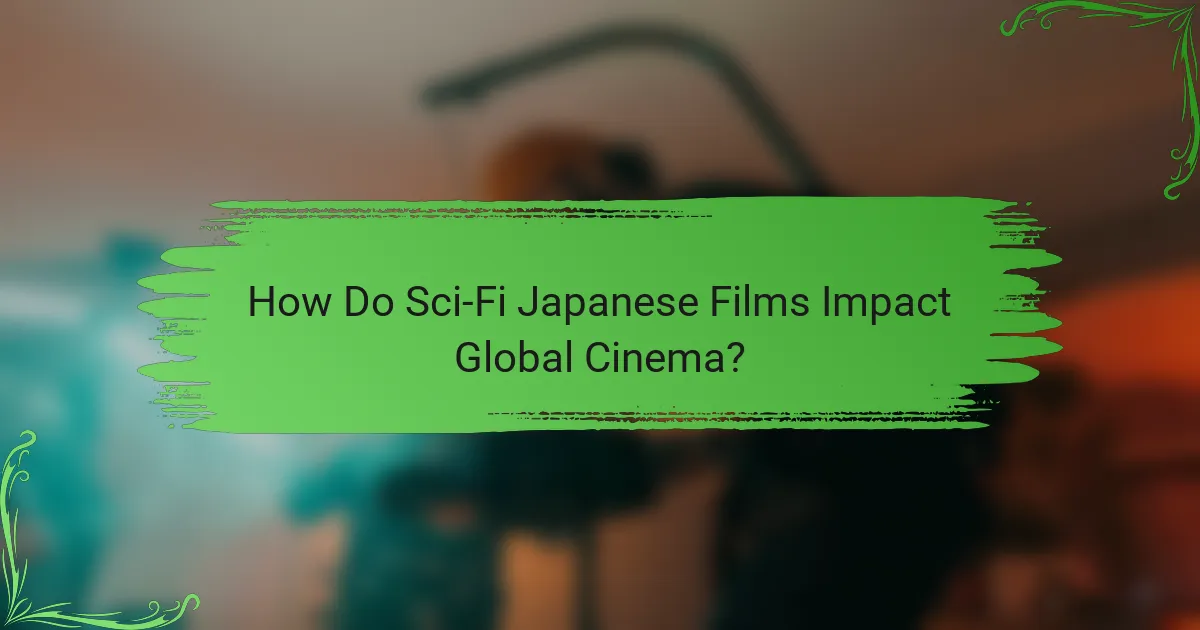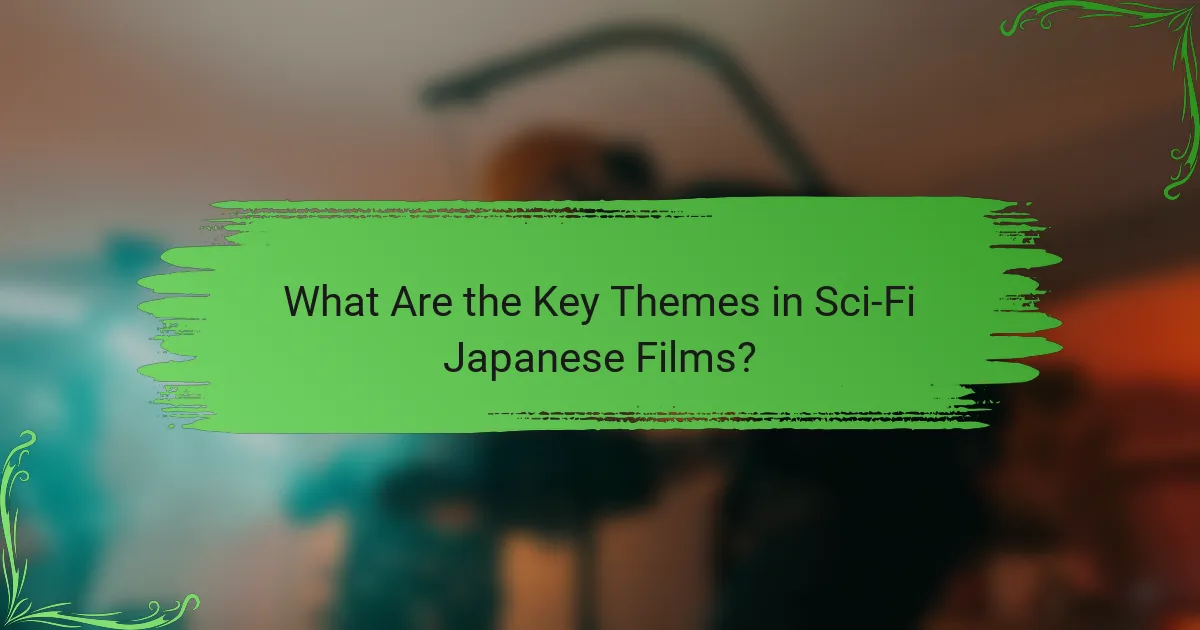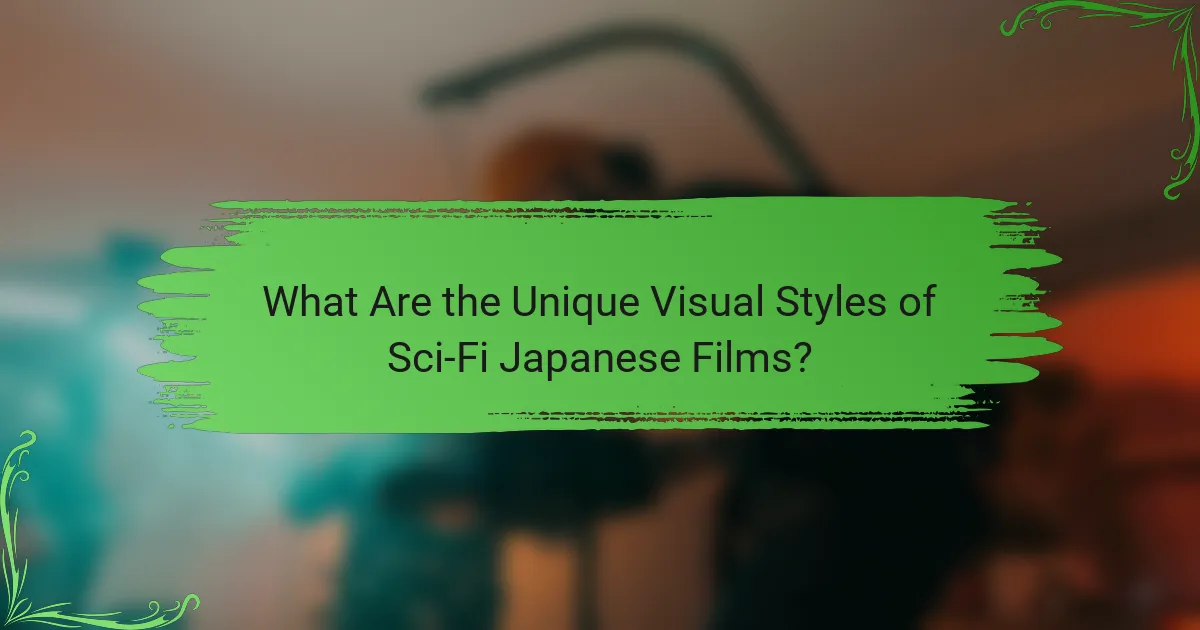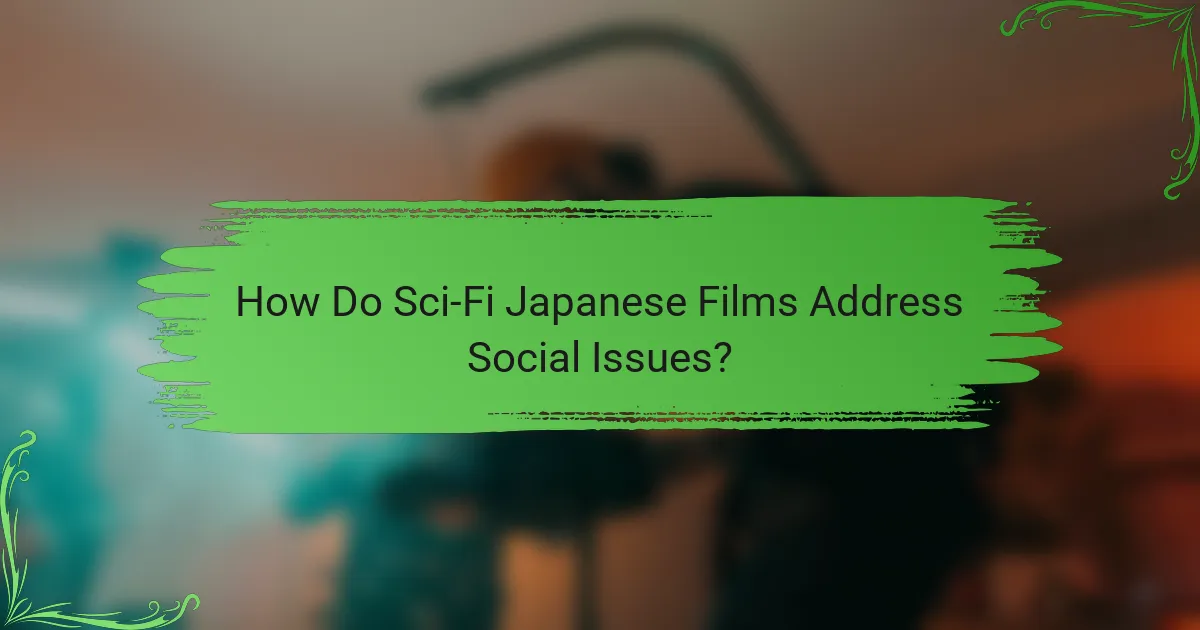Sci-fi Japanese films have revolutionized the genre, offering groundbreaking narratives and striking visual aesthetics that resonate globally. These films delve into intricate themes such as technology’s impact on humanity, identity, and societal challenges, making them vital cultural touchstones in cinema history.

What Are the Most Influential Sci-Fi Japanese Films?
Influential sci-fi Japanese films have shaped the genre globally, introducing innovative storytelling and unique visual styles. These films often explore complex themes such as technology, identity, and societal issues, making them significant cultural artifacts.
Akira (1988)
Akira is a landmark film that revolutionized anime and sci-fi cinema. Set in a post-apocalyptic Tokyo, it follows a biker gang member who gains psychic powers, leading to chaos and government conspiracies.
The film is notable for its stunning animation and dystopian themes, which resonate with contemporary concerns about technology and societal breakdown. Its influence extends beyond Japan, inspiring filmmakers and animators worldwide.
Ghost in the Shell (1995)
Ghost in the Shell delves into the intersection of humanity and technology, exploring what it means to be human in a cybernetic world. The story follows Major Motoko Kusanagi, a cyborg officer hunting a mysterious hacker.
This film is acclaimed for its philosophical depth and visual aesthetics, blending traditional animation with CGI. Its themes have influenced numerous works in both anime and Western cinema, particularly in the realm of cyberpunk.
Spirited Away (2001)
Spirited Away is a critically acclaimed film that combines fantasy with elements of Japanese folklore. It tells the story of a young girl who becomes trapped in a spirit world and must navigate its challenges to save her parents.
While primarily a fantasy film, its imaginative storytelling and rich visuals have made it a significant entry in the sci-fi genre. The film won an Academy Award and remains a beloved classic, showcasing the potential of animated storytelling.
Battle Royale (2000)
Battle Royale presents a chilling scenario where a class of students is forced to fight to the death on a deserted island. This film critiques societal norms and the extremes of competition, making it a provocative commentary on youth culture.
Its intense narrative and moral dilemmas have sparked discussions about violence in media and its impact on society. The film’s influence can be seen in various adaptations and similar survival narratives in both film and literature.
Neon Genesis Evangelion (1995)
Neon Genesis Evangelion redefined the mecha genre by blending action with deep psychological themes. It follows teenagers piloting giant robots to combat mysterious beings known as Angels, while also exploring their inner struggles.
This series is known for its complex characters and existential themes, challenging traditional storytelling in anime. Its impact is profound, influencing countless series and films, and it remains a subject of analysis among fans and scholars alike.

How Do Sci-Fi Japanese Films Impact Global Cinema?
Sci-fi Japanese films significantly influence global cinema by introducing unique narratives and visual styles that challenge conventional storytelling. Their innovative approaches often inspire filmmakers worldwide, leading to a richer cinematic landscape.
Innovative storytelling techniques
Japanese sci-fi films frequently employ non-linear narratives and complex character development, setting them apart from traditional Western storytelling. Techniques such as dream sequences, flashbacks, and multiple perspectives create layered plots that engage audiences on various levels.
For example, films like “Akira” and “Ghost in the Shell” utilize intricate world-building and philosophical themes, prompting viewers to ponder deeper questions about technology and humanity. This emphasis on narrative depth encourages filmmakers to experiment with their own storytelling methods.
Influence on Western filmmakers
The impact of Japanese sci-fi on Western filmmakers is evident in numerous blockbuster franchises. Directors like James Cameron and the Wachowskis have drawn inspiration from Japanese works, incorporating visual styles and thematic elements into films such as “Avatar” and “The Matrix.”
Moreover, the aesthetic and narrative choices seen in Japanese sci-fi have led to a resurgence of interest in anime and manga adaptations in Hollywood, showcasing the genre’s global appeal and its ability to transcend cultural boundaries.
Cultural themes and motifs
Cultural themes prevalent in Japanese sci-fi often explore the relationship between humanity and technology, reflecting societal concerns about rapid advancement and its consequences. These motifs resonate with global audiences, prompting discussions about ethics, identity, and the future.
Films like “Neon Genesis Evangelion” delve into psychological and existential themes, while others address environmental issues and the human condition. Such themes not only enrich the narratives but also encourage filmmakers worldwide to incorporate similar cultural reflections into their own works.

What Are the Key Themes in Sci-Fi Japanese Films?
Sci-fi Japanese films often explore profound themes that reflect societal concerns and philosophical questions. Key themes include the relationship between technology and humanity, environmental issues, and the exploration of identity and consciousness.
Technology and humanity
The interaction between technology and humanity is a central theme in many Japanese sci-fi films. These narratives frequently examine how advancements in technology impact human relationships, ethics, and societal structures. For instance, films like “Ghost in the Shell” delve into the implications of cybernetic enhancements and artificial intelligence on personal identity.
Viewers are often prompted to consider the balance between embracing technological progress and maintaining human values. This theme raises questions about dependency on technology and the potential loss of individuality, urging audiences to reflect on their own relationship with modern innovations.
Environmental concerns
Environmental issues are prominently featured in Japanese sci-fi, often highlighting the consequences of human actions on nature. Films like “Nausicaä of the Valley of the Wind” portray dystopian futures where ecological disasters result from neglect and exploitation of the environment. Such narratives serve as cautionary tales about sustainability and conservation.
These films encourage viewers to think critically about their environmental impact and the importance of protecting natural resources. By showcasing the interconnectedness of humanity and nature, they advocate for a more harmonious coexistence with the planet.
Identity and consciousness
Explorations of identity and consciousness are prevalent in sci-fi Japanese cinema, often questioning what it means to be human. Films such as “Paprika” and “Perfect Blue” investigate the boundaries between reality and dreams, as well as the effects of technology on self-perception. These stories challenge viewers to consider the fluidity of identity in a rapidly changing world.
Through complex characters and surreal narratives, these films prompt discussions about mental health, societal expectations, and the nature of consciousness itself. They invite audiences to reflect on their own identities and the influences that shape them in contemporary society.

Which Sci-Fi Japanese Films Are Essential for Beginners?
For anyone new to Japanese sci-fi cinema, three films stand out as essential viewing: “Akira,” “My Neighbor Totoro,” and “Ghost in the Shell.” These films not only showcase the genre’s creativity but also highlight key themes and styles that define Japanese science fiction.
Akira (1988)
“Akira” is a landmark film that revolutionized anime and sci-fi storytelling. Set in a post-apocalyptic Tokyo, it explores themes of power, corruption, and the consequences of technological advancement through the story of a teenager with psychic abilities.
The film is renowned for its stunning animation and complex narrative, making it a must-watch for beginners. Its influence can be seen in numerous films and series worldwide, and it often serves as a reference point for discussions about dystopian futures.
My Neighbor Totoro (1988)
This film emphasizes the connection between humanity and nature, making it a gentle introduction to Japanese storytelling. Its whimsical approach and rich visual style provide a contrast to more intense sci-fi narratives, appealing to a broad audience.
Ghost in the Shell (1995)
“Ghost in the Shell” delves into the philosophical implications of artificial intelligence and cybernetics. Set in a futuristic world where humans can augment their bodies with technology, it raises questions about identity and consciousness.
This film is pivotal for understanding the cyberpunk genre and its exploration of the human condition in a tech-driven society. Its thought-provoking themes and innovative animation techniques have made it a classic, influencing many filmmakers and writers in the sci-fi realm.

What Are the Unique Visual Styles of Sci-Fi Japanese Films?
Sci-fi Japanese films are renowned for their distinctive visual styles that blend imaginative storytelling with innovative aesthetics. These films often utilize a combination of anime aesthetics, live-action cinematography, and vibrant color schemes to create immersive experiences that captivate audiences.
Anime aesthetics
Anime aesthetics in sci-fi films are characterized by exaggerated features, dynamic action sequences, and intricate world-building. These visuals often include stylized character designs and fantastical environments, which enhance the narrative’s imaginative elements.
For instance, films like “Akira” and “Ghost in the Shell” showcase detailed backgrounds and fluid animation that transport viewers into futuristic settings. The use of anime aesthetics allows filmmakers to explore complex themes while maintaining a visually engaging style.
Live-action cinematography
Live-action cinematography in Japanese sci-fi films often employs unique camera techniques and framing to create a sense of scale and depth. Directors may utilize wide-angle shots to emphasize expansive landscapes or close-ups to capture emotional nuances in characters.
Films such as “Blade of the Immortal” and “Shin Godzilla” illustrate how live-action cinematography can effectively convey tension and drama. The combination of practical effects and CGI further enhances the visual storytelling, making the impossible seem tangible.
Use of color and symbolism
The use of color and symbolism in sci-fi Japanese films plays a crucial role in conveying themes and emotions. Color palettes are often carefully chosen to reflect the mood of a scene, with bright hues indicating hope and darker tones suggesting despair or conflict.
For example, in “Your Name,” vibrant colors are used to signify the connection between the two main characters, while muted shades in “Perfect Blue” highlight psychological tension. Symbolism, such as recurring motifs or color associations, enriches the narrative and invites deeper interpretation from the audience.

How Do Sci-Fi Japanese Films Address Social Issues?
Sci-fi Japanese films often tackle social issues by using futuristic settings and technology to reflect contemporary concerns. These films explore themes such as environmental degradation, government control, and the impact of technology on human relationships.
Commentary on technology
In many sci-fi Japanese films, technology serves as both a tool and a source of conflict, highlighting its dual nature in society. For instance, films like “Ghost in the Shell” examine the implications of cybernetics and artificial intelligence on identity and autonomy.
These narratives often caution against over-reliance on technology, suggesting that it can lead to alienation and loss of humanity. As viewers engage with these stories, they are prompted to consider the balance between technological advancement and ethical responsibility.
Moreover, films such as “Akira” illustrate the consequences of unchecked technological development, showcasing dystopian futures where societal collapse results from the misuse of power. This commentary encourages audiences to reflect on current technological trends and their potential societal impacts.
